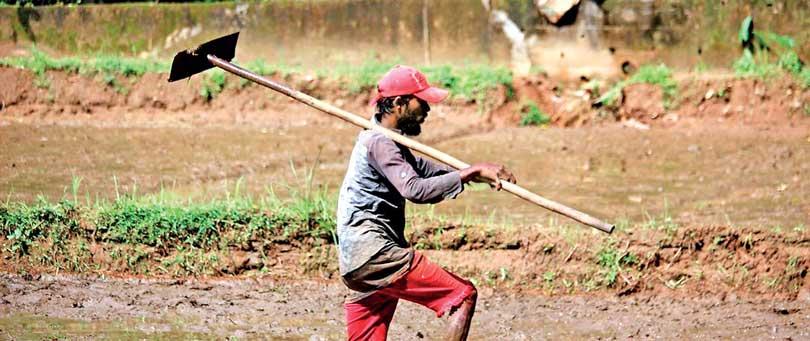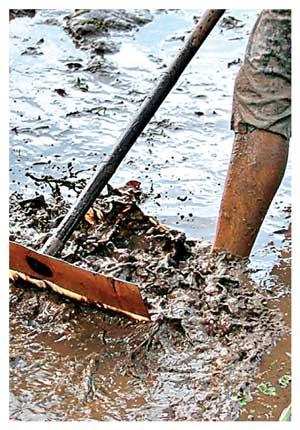Reply To:
Name - Reply Comment
Mercury Rising in Sri Lanka as climate Change effects hit the island paradise

Pic Courtesy: Reuters
 Longer and stronger heatwaves are among the most certain effects of climate change, according to scientists. The sustained record-breaking temperatures that have afflicted parts of the world in recent years are a sign of a rapidly warming planet and a foreshadowing of how the heat will only continue to rise.
Longer and stronger heatwaves are among the most certain effects of climate change, according to scientists. The sustained record-breaking temperatures that have afflicted parts of the world in recent years are a sign of a rapidly warming planet and a foreshadowing of how the heat will only continue to rise.
Across the globe, millions of people’s lives and livelihoods are threatened by extreme heat. People are killed, infrastructure damaged, and food insecurity exacerbated.
 Developing countries and low-income populations are often the hardest hit by high heat, and often have the fewest means to cope.
Developing countries and low-income populations are often the hardest hit by high heat, and often have the fewest means to cope.
“This heat is a result of severe droughts, climate change and microclimatic changes,” said Jayantha Wijesingha, convener at the Rainforest Protectors of Sri Lanka during an interview with the Daily Mirror on the subject of increasing temperature, current climate crisis in Sri Lanka and the effective methods and solutions to curb these problems.
“We like the idea of a reservoir solar power plant but the government is not doing anything about the other sustainable development goals or the sustainability in terms of forest cover. We need to increase or rather protect whatever that’s remaining but we aren’t doing either
Microclimatic changes in Sri Lanka
 Wijesingha explained that while climate change means changes that happen in climate over time, microclimatic changes are the changes that happen in specific geography due to specific reasons. “Sometimes people refer to what we have in Sri Lanka as a result of global climate change and not microclimatic changes. In my opinion, it is a combination of both.” According to Wijesingha, global climate changes due to heatwaves, warmth, ocean currents and changes in the CO2 levels all have an impact on Sri Lanka but what we are experiencing mostly is the country’s climate change that is happening as a result of the changes in the environment that we have seen in the earlier days and recent past.
Wijesingha explained that while climate change means changes that happen in climate over time, microclimatic changes are the changes that happen in specific geography due to specific reasons. “Sometimes people refer to what we have in Sri Lanka as a result of global climate change and not microclimatic changes. In my opinion, it is a combination of both.” According to Wijesingha, global climate changes due to heatwaves, warmth, ocean currents and changes in the CO2 levels all have an impact on Sri Lanka but what we are experiencing mostly is the country’s climate change that is happening as a result of the changes in the environment that we have seen in the earlier days and recent past.
“The only positive action the government has taken so far is in terms of renewable energy. But not in an effective way.” He explained that solar energy is great but if we have to cut 500 acres of forest to set up a solar power plant, then it won’t serve the purpose of solar power energy. Instead of that, if we can probably convert almost all our government buildings or factories into solar power, it would be much more environmentally and economically efficient in terms of ecological services. Renewable energy is good but the president and the respective policymakers don’t understand what renewable energy is and how it should be harnessed sustainably. Renewable energy can be harnessed unsustainably too.
Thus 30% of each has destroyed our forests and has resulted in the microclimatic changes that have happened over time, ultimately leading to a local climate change together with other significant ecosystem destruction that we have seen throughout time
Decreasing forest cover
According to the expert, Sri Lanka had a forest cover of about 80% before British rule, and after we gained independence, it was reduced from 48% to 50%. And since then, we have lost about another 30% of forest cover. “The destruction in terms of deforestation done by the British is equal to the destruction done by our rulers since the British left,” he said. Thus 30% of each has destroyed our forests and has resulted in the microclimatic changes that have happened over time, ultimately leading to a local climate change together with other significant ecosystem destruction that we have seen throughout time. Wijesingha pointed out that we don’t have enough forest cover left in Sri Lanka compared to other countries similar to us.
“There isn’t enough forest cover suitable for our population density. We have protected areas for the 30% landmark but that doesn’t mean we have that much forest cover.”
The government’s data is based on 2008 and he explained that most of our forest cover was lost due to resettlements, development projects and various other investments after the war. What the government should focus on at the moment in terms of this issue is to protect the remaining forest cover we have and work on increasing it. For that, there has to be a ban, and not utilising precious forest areas for any development activities.
Increase in temperature and weak ecosystem regulations
The high temperatures are observed in different intermittencies. Severe heat has reduced the water in reservoirs. When the evaporation and the lack of water due to the severe heat resulted in the lack of power generation, we had an electricity crisis as well. The impact of heat is not only limited to one or two areas, but he also explained. But it is related to all sectors from power generation to agriculture, environment, biodiversity, and then various other sectors. Lack of other ecosystem regulations, such as loss of wetlands and waterbody ecosystems also contribute to the temperature rise. Now we are converting all the wetlands into tanks. “It’s not only the water that has the potential to cool down the temperature but the mangrove and other kinds of ecosystems within a wetland, have that control of the heat. Therefore water bodies, wetlands, paddy lands, and lowlands also help with the temperature regulation but these ecosystems are converted and transformed into different development activities.”
Wijesingha mentioned that the buildings in Sri Lanka do not follow any green building code. There is a rule where on any particular land, you can only build 60% of it and the remaining 40% has to be kept for environmental services. What happens now is that we don’t basically use the 40% as it is. Even if we keep that 40%, we concrete it. “With concrete, there’s a reflection of heat unlike when the soil and greenery are available. So concreting of the entire city has resulted not only in the temperature rise but also the lack of groundwater charging.”
Groundwater charging is a big concern with the temperature rising and the unsuccessful rainwater drainage. Concrete, therefore, plays a large role in terms of the temperature rising. Apart from declining forest cover, other ecosystems such as wetlands are also destroyed due to mining activities. The government also has to look at the emissions very carefully and ensure that the emissions are controlled in a manner that does not impact the environment negatively.
The need for a proper scientific conservation strategy
These climatic changes have a significant impact on agriculture, water security, power generation and almost all the other sectors. Between 2015 and 2017, severe floods were experienced in Sri Lanka. In 2017 and 2018, four seasons could not be cultivated in certain districts. When it comes to renewable energy, we have to understand what is actually renewable energy, what can basically supply the demand, the need of the hour, what can help resolve the crisis and also how can it be harnessed sustainably. We have to understand that just because it’s renewable, we cannot just do unsustainable things.
“We like the idea of a reservoir solar power plant but the government is not doing anything about the other sustainable development goals or the sustainability in terms of forest cover.” We need to increase or rather protect whatever that’s remaining but we aren’t doing either. We are not doing anything for the forest cover and we are not doing anything significant about the emission control which impacts negatively on the temperature rise. The government doesn’t have a proper means or a clear specific plan in terms of preventing deforestation, temperature rise, global warming or other issues. “We need to tell the government that it needs a sustainable land management plan. They don’t have one which is why they are using forest land for various development activities. Together with that, a proper ecosystem emission plan should be implemented in order to solve this crisis and control the temperature.”
In simpler words, Wijesingha stressed that the government should have a proper, scientific conservation strategy. “It has to be strategic,” he said. “Not bits and pieces suddenly coming up with something with no operational plan. When management and action plans are lost, the groundwork fails.”
The Rainforest Protectors believe that if the air, water and soil can be managed, everything else can be managed too. For any kind of change, the government, the public officials and the institutions, corporations, companies and individuals have to come together responsibly. If the government has a conservation strategy, the institutions and the companies should too. The individuals of the country should also have their conservation strategy. We have to concentrate on how to conserve things. How to protect things? How do we sustainably use our resources? Individuals should ensure that their daily routine contributes to the conservation process. We have to make sure that our consumption is not a high carbonate consumption. We should encourage ourselves and others to buy and go local. We should try to reduce our carbon footprint.
“Our food, our energy, our transportation, our backyards and our lands should contribute to the conservation of biodiversity, water, prevention of air pollution and the conservation of soil,” Wijesingha commented. Our waste must be reduced and our private lands should be made as green as possible. Individuals have to make sure that they control their temperature in their own backyards. The Rainforest Protectors’ notion is that it has to be a lengthy education process as well. “When people are conscious and educated, they will take their steps to ensure it, become a part of it and help the government and the world achieve this target.”